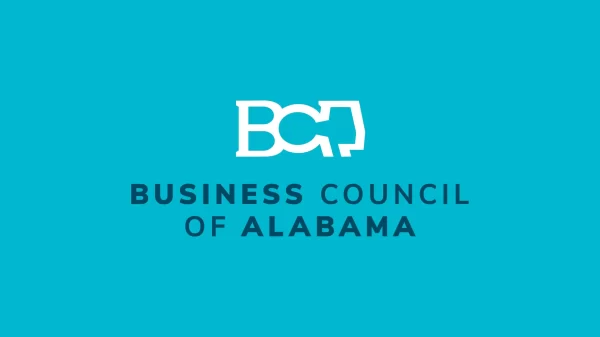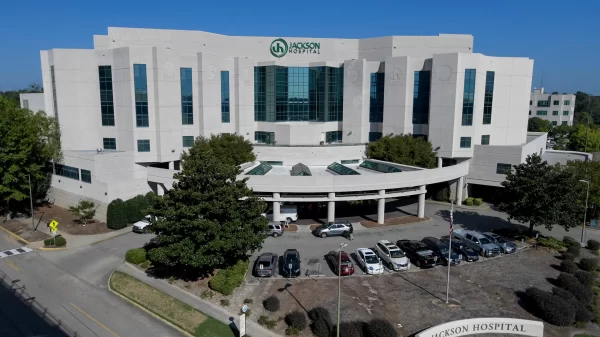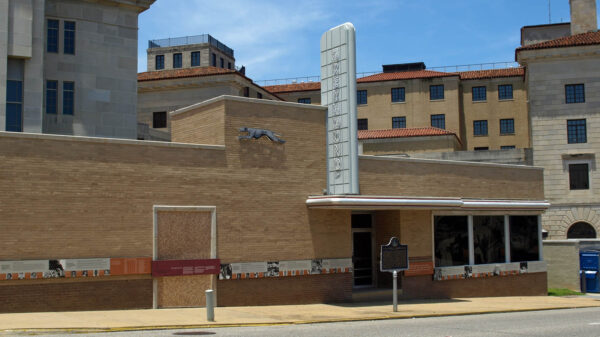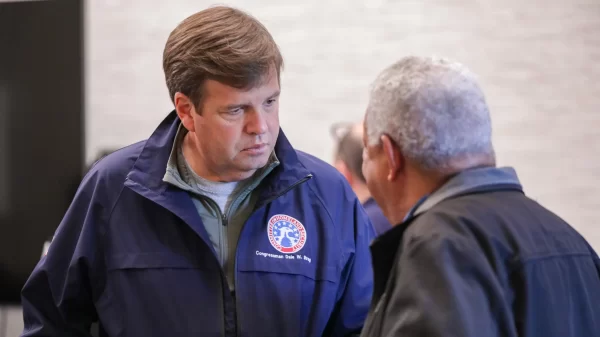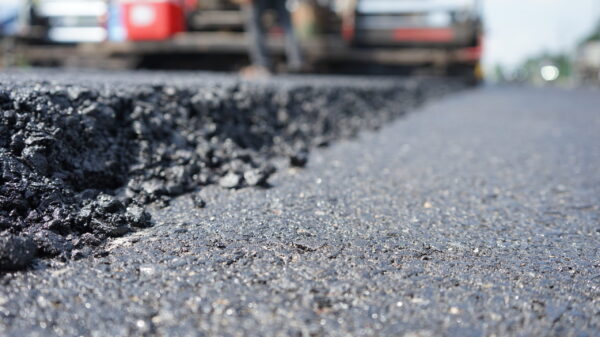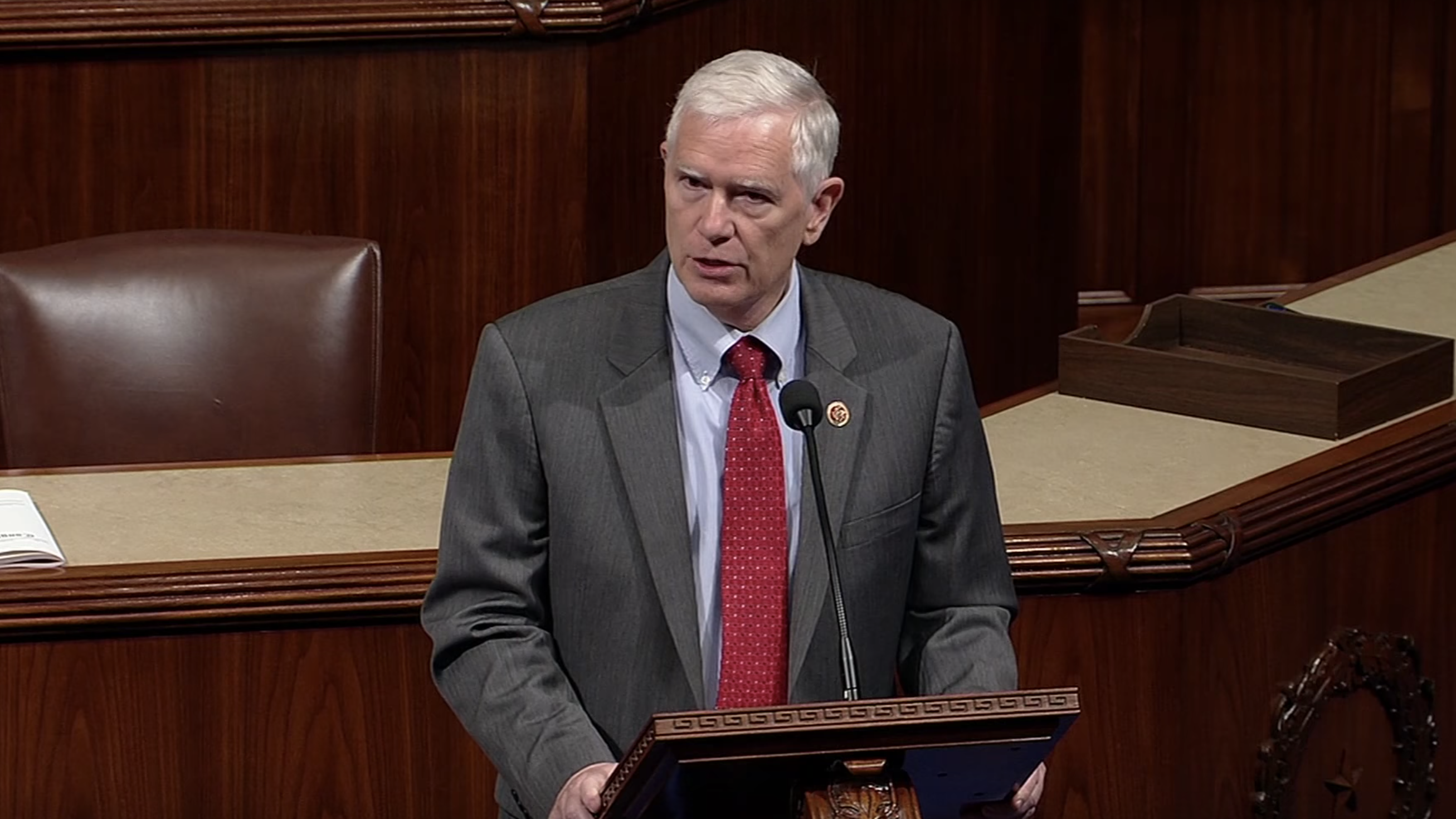Wednesday, Congressman Mo Brooks (R-Huntsville) questioned NASA experts on their starkly different views on how to best return to the Moon during a House Space Subcommittee hearing.
Former NASA Associate Administrator Doug Cooke advocated replicating the simpler “Apollo” approach. Current NASA Associate Administrator Kenneth Bowersox defended a more complex, multi-faceted “Artemis” approach. Cooke estimated that NASA’s current “Artemis” approach has a 49 percent mission failure risk versus an “Apollo” approach mission failure risk of 20 percent.
“Alright, let me quote from it in three different places. Quote, “Apparently under pressure from commercial launch providers who need additional launches to fill their manifests NASA is being directed to break the lunar lander into multiple pieces so that these can fit on less powerful commercial launchers increasing risk and constraining the architecture.” Brooks read. “Second quote, “NASA’s current approach requires 8 new developments— interjection by me, versus 3 with Apollo, 8 to 3— resuming the quote, 8 launches versus 1 with Apollo and approximately 17 mission critical operations versus 7 with Apollo to achieve the Artemis goals by 2024.” End quote. And then finally quote, “If you assume each event has a 98% probability of success the likelihood of mission success is 80% for this Apollo-like approach. In comparison, the likelihood of mission success for NASA’s current approach is 51%, not taking into account the launch vehicle maturity risk. NASA can significantly increase speed, simplicity, cost, and probability of mission success by deferring gateway, leveraging SLS, and reducing critical mission operations.” End quote.”
“Now, if I were an astronaut, I would be concerned about these kinds of comments from a former NASA associate administrator,” Brooks said. “And, they appear to suggest that profit motive (i.e. the desire of some individuals for personal gain) may be driving NASA decision making at much greater risk to our astronauts. So, I would like to have Mr. Cook, if you would, expound on that leaving enough time for Mr. Bowersox to reply.”
“I think that the pressure to get to commercial capabilities and drive that objective is causing us to do things that are higher risk and going to this many developments, from scratch by the way, starting now trying to get to 2024 with that many critical mission events the probabilities are that,” Cooke replied. “And, if you assume .98, .98 is arbitrary, and some of the numbers would be higher and some would be lower, but it is illustrative of the complexity that’s been bought into versus what could be done with a more simple approach.”
“First, nobody is driving us,” Bowersox said. “We actually came to these conclusions on our own and a big driver is to have flexibility. We want to have multiple options. We don’t want to rely just on one system. We would like to have other systems. And, what we are trying to build on is some of the success we have experienced in having flexibility with our commercial cargo vehicles for station. Having multiple providers, multiple options there has been really useful. When one has a problem we can go to the other provider and so we want to take advantage of some of that learning and move it into this other program to help us get to the moon and on to Mars.”
“Well, if I could interject for a moment, do you concur with Mr. Cooke’s belief that the Apollo method of going to the Moon was simpler and safer versus the current Artemis approach of going to the Moon?” Brooks asked.
“What I would say about the Apollo approach is that it was simpler,” Bowersox answered. “I would not say it was necessarily safer. We will know that after we are done. But, I think that our current approach has a lot of potential to be actually safer than Apollo. Because of the flexibility and complexity we can actually increase some of the safety aspects.”
Brooks asked, “Mr. Cooke, in the time I have remaining do you have any additional comments you would like to give on this subject?”
“Just that it gets back to probabilities in the end and critical events, critical launches, and it is the more you have the higher the risk.” Cooke responded. “We did succeed with Space Station which was about 40 Shuttle launches to build. Had we lost a payload during that time we didn’t have backups. We didn’t have the margin and budget to have backup hardware. So, if we had lost one of those payloads we would have been scrambling. So, it is better to keep it simple. It is hard enough as it is. If you watch the documentaries from Apollo 11 and saw the team in the control room, who I grew up under at Johnson’s Space Center, you saw their anticipation. Every burn, every docking, every possible critical operation; you saw their anxiety leading up to that point and the relief when it was done. So, the fear that you have like that the better you are I think and less risk.”
Artemis is NASA’s program to return astronauts to the lunar surface by 2024, including the first woman to walk on the moon. When they land, our American astronauts will be the first humans ever before to visit the Moon’s South Pole.
NASA is working with U.S. companies, including some with a presence in North Alabama, as well as our international partners. NASA is vowing to push the boundaries of human exploration forward to the Moon. As a result of Artemis, NASA will be able to establish a sustainable human presence on the Moon by 2028 to uncover new scientific discoveries and demonstrate new technological advancements, that will lay the foundation for private companies to build a lunar economy.
President Donald J. Trump (R) has renewed the nation’s focus on expanding humanity’s presence beyond planet Earth. Space Policy Directive-1 provides the direction for NASA to organize more effectively government, commercial and international efforts to develop a permanent presence off Earth that generates new markets and opportunities, both scientific and economic.
NASA’s ultimate goal is to send humans to Mars, and NASA says that Artemis is the first step to begin this next era of exploration.
NASA is working on going quickly and sustainably with a reusable architecture as much as possible. NASA is going with our corporate and international partners to explore faster and explore more together. The moon project will be used to prove out the technologies that will take us to Mars and beyond.
The SLS will take NASA into space and Orion will take our astronauts to deep space to usher in a new era of space exploration. Orion will take us farther than anyone has gone before, and will dock with the Gateway in orbit around the Moon. The spacecraft will carry up to four crew members and is designed to support astronauts traveling hundreds of thousands of miles from home, where getting back to Earth takes days rather than hours.
The Lunar Orbital Platform-Gateway is a lunar-orbit space station, which will serve as a solar-powered communications hub, science laboratory, short-term habitation module, and holding area for rovers and other robots. The power and propulsion element is a high-power, 50-kilowatt solar electric propulsion spacecraft that is three times more powerful than current capabilities. As a mobile command and service module, the Gateway provides a communications relay for human and robotic expeditions to the lunar surface, starting at the Moon’s South Pole.
Both the distance and duration demand that Orion have systems that can reliably operate far from home, be capable of keeping astronauts alive in case of emergencies and still be light enough that the SLS can launch it.
NASA will launch Orion on the Space Launch System, from a modernized spaceport at Kennedy Space Center. On the first integrated mission, known as Exploration Mission-1, an un-crewed Orion will venture thousands of miles beyond the Moon over the course of about three weeks. A series of increasingly challenging missions with crew will follow including a test flight around the Moon before operational missions to the Gateway.
“President Trump and the leadership he has surrounded himself with believe that we [the United States] can marshal our resources properly and lead in space again,” Economic Developer Dr. Nicole Jones explained. “Part of that strategy includes public-private partnerships; federal resources (NASA) can focus on exploring the frontier, and the commercial sector can focus on supplying space.”
Thousands of Alabama workers at both Huntsville’s Marshall Space Flight Center and NASA’s corporate partners with facilities in North Alabama are working on the Artemis project. Engineers at Marshall are doing the lead engineering work on both the SLS and the Artemis moon lander.
Mo Brooks is serving in his fifth term representing Alabama’s Fifth Congressional District.





